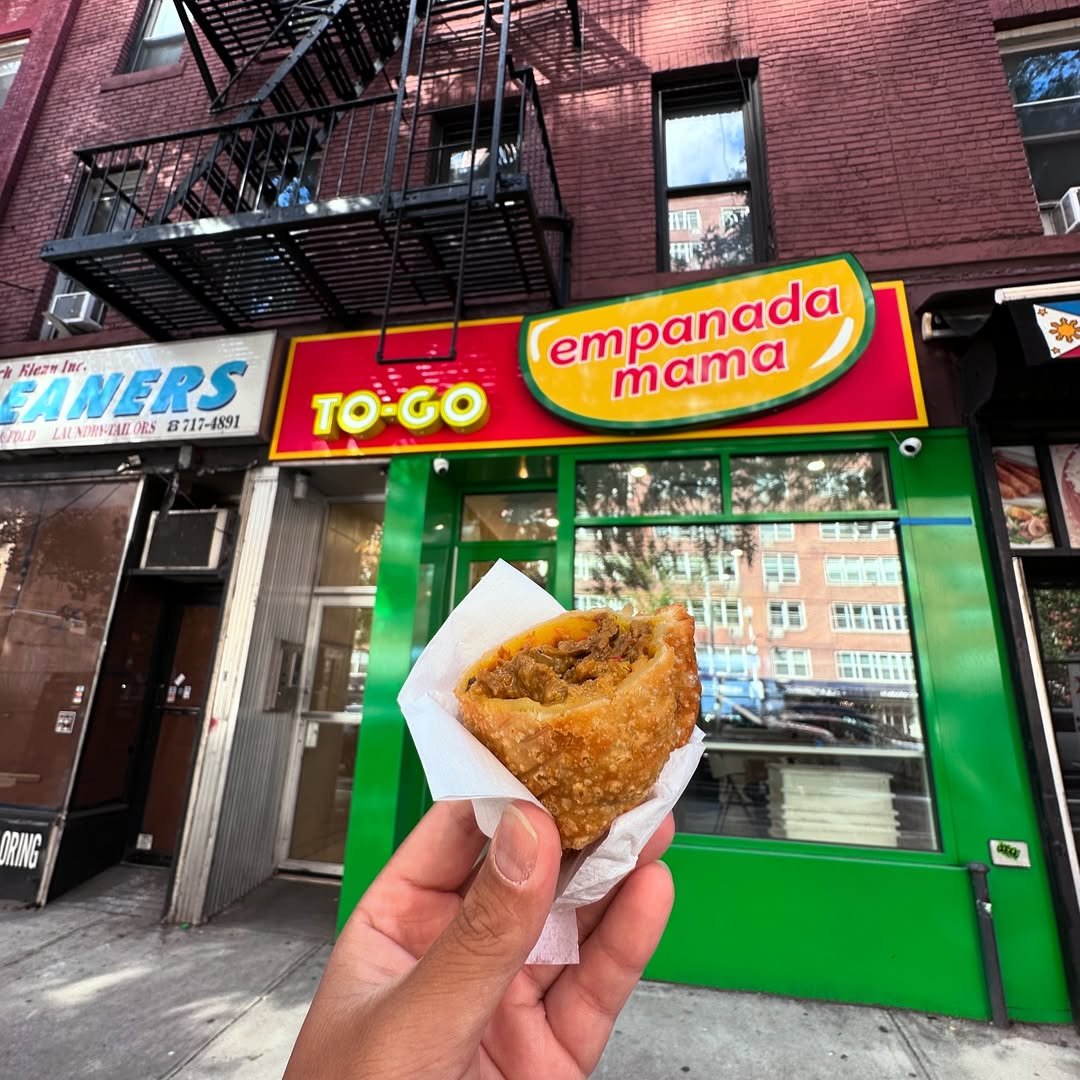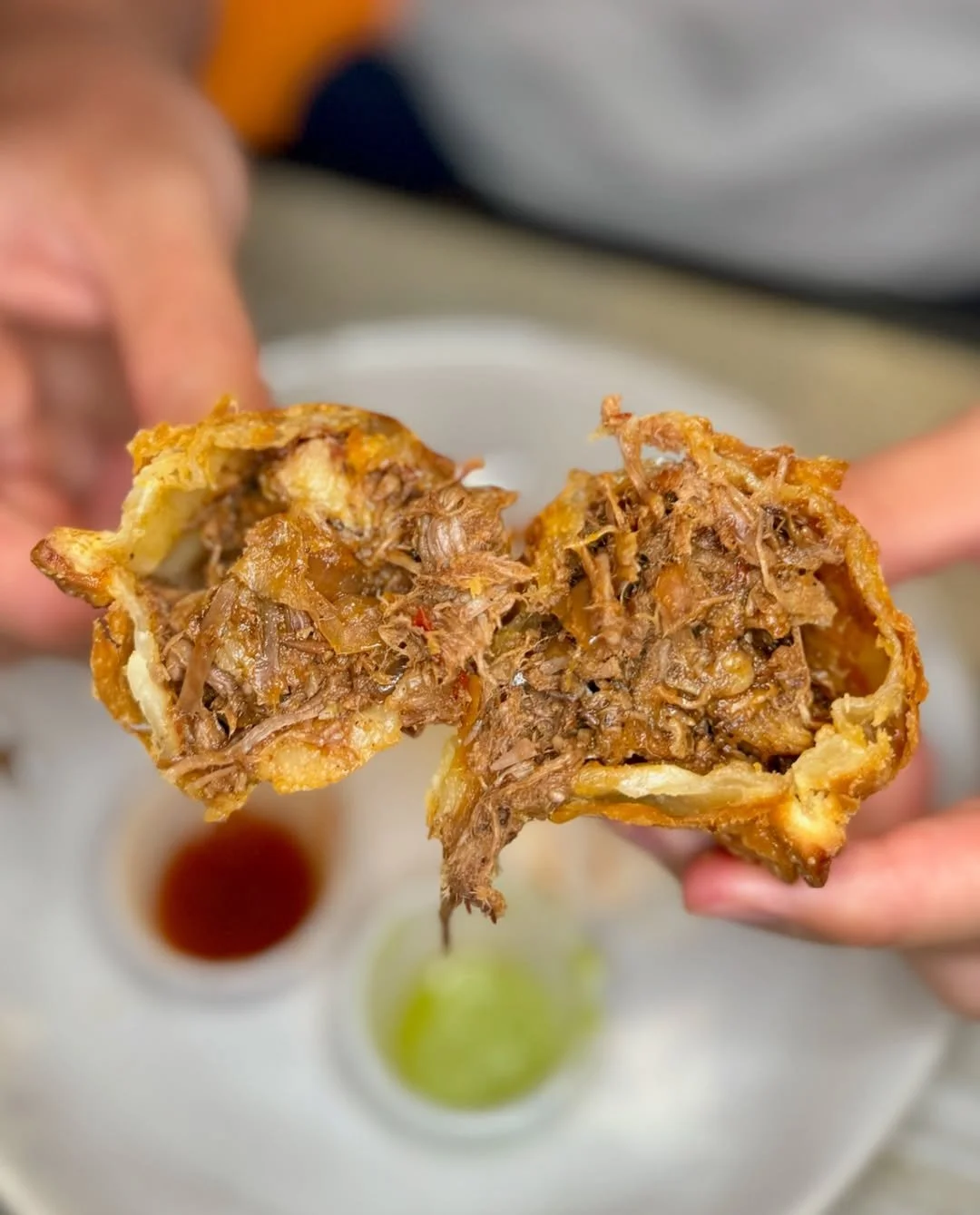What Is an Empanada? A Delicious Introduction to Latin America’s Favorite Hand Pie
Empanadas are the kind of food that brings people together, warm, filled with flavor, and packed into a neat, hand-sized pastry shell that’s just as easy to grab on the go as it is to enjoy at a sit-down dinner. But if you’ve never had one before, you might be wondering: what exactly is an empanada, and why do so many cultures swear by it?
At its simplest, an empanada is dough wrapped around a filling. But the beauty is in its variety. They can be snack-sized or meal-sized, baked or deep-fried, and every version has its own loyal fanbase. But what exactly makes empanadas such a staple in Latin cuisine and street food across the globe?
Let’s take a deep dive into this beloved hand pie: where it came from, different types of empanadas, what makes it so good, and why New Yorkers can’t get enough of spots like Empanada Mama.
What Is an Empanada? The Origins of This Flavor-Packed Classic
So, what is an empanada beyond the flaky crust and delicious filling?
The word "empanada" comes from the Spanish verb empanar, meaning ‘to wrap in bread.’ While empanadas are now most associated with Latin America, their journey began in Spain, where travelers and traders brought over pastries inspired by Middle Eastern meat pies. As Spanish settlers arrived in the Americas, they introduced empanadas, which were quickly adopted and transformed by local cultures.
Indigenous ingredients, like corn, cassava, plantains, and tropical spices, are blended with European culinary techniques to create new regional variations. Each country began using what's locally available: corn masa in Central America, yuca dough in the Caribbean, or wheat flour in Argentina and Chile.
Over generations, the definition of an empanada has evolved from a simple question to a proud culinary identity. Today, they’re passed down through family recipes, lovingly folded during holidays, and constantly reinvented in local bakeries and restaurants alike.
Types of Empanadas Across Latin America
Travel anywhere in Latin America, and you’ll quickly notice that empanadas aren’t one-size-fits-all. The types of empanadas vary wildly, from shape to size to flavor, depending on where you are.
In Argentina, empanadas are often baked and filled with minced beef, olives, hard-boiled eggs, and sometimes even raisins. The dough is flaky, and the seal is usually braided by hand. You'll find different flavors by province. Salta’s spicy meat empanadas are legendary.
Colombia and Venezuela favor fried empanadas made with cornmeal dough, often filled with shredded beef, cheese, or even sweet guava paste. The crust is crispy, golden, and slightly nutty from the corn.
Chile brings seafood into the spotlight. Empanadas de mariscos often include shrimp or mussels, occasionally mixed with egg and olives for extra richness. These are typically baked and served warm at gatherings or picnics.
In the Caribbean, empanadas often skew sweet. You’ll find coconut and pineapple-stuffed versions, some dusted with sugar after frying.
In Puerto Rico and the Dominican Republic, pastelillos (a similar dish) include plantain or yuca-based dough and tropical fillings.
Central America likes to keep things simple and hearty. Chicken with recado (a tomato-based sauce), beans, cheese, and even pumpkin are common fillings.
Some are street food essentials, served hot in a paper wrapper. Others are homemade delicacies only made for special occasions. All reflect how different types of empanadas are shaped by local culture, ingredients, and tradition.
Empanada Fillings That Stand Out
One of the most exciting parts about eating or making empanadas is the variety of fillings you can try. A quick scroll through Empanada Mama’s menu will make your mouth water. From spicy chicken to cheesesteak to sweet fig and cheese, the options are endless.
But what makes a great empanada filling?
It’s all about balance. Moisture is essential, but too much liquid will ruin the crust. A good filling has fat (for richness), seasoning (for depth), and texture (for bite). Many cooks swear by sautéing meats or vegetables first to remove excess water and concentrate flavors.
Vegetarian empanada fillings have also taken center stage lately. Spinach and cheese, mushrooms with herbs, or even plant-based proteins are now common. With dietary trends shifting, we’re seeing gluten-free doughs, vegetarian empanadas, and even air-fried versions appear in bakeries and food trucks.
A few standouts from Empanada Mama include the “Viagra” (seafood medley), “Tropical Chicken” (chicken with pineapple), and the “Cheesesteak” with tender beef and peppers. These fillings aren’t just tasty, they tell a story of fusion and creativity.
Anatomy of a Great Empanada
So what really makes a great empanada? Let’s break it down:
Dough: Whether it’s buttery and flaky (like in Argentina) or chewy and golden (like in Colombia), the dough sets the tone. Some use butter, some lard, and others oil. The choice affects the texture and flavor. Gluten-free or yuca-based versions are on the rise.
Filling Ratio: Too little filling and it’s all dough. Too much and it bursts open. Most cooks aim for a 2:1 ratio, two parts dough to one part filling.
Sealing Technique: Empanadas aren’t just sealed for function; they’re sealed for flair. A fork-pressed edge is quick and easy. Braided or crimped edges, on the other hand, reflect the skill of the maker and sometimes even hint at the filling inside.
Cooking Method: Baking gives a light, crisp shell. Frying delivers that crunchy, golden hug around the filling. We’ve also seen air-fried empanadas gain popularity for their health factor.
Here’s a tip we picked up from an old family recipe: always let your dough rest before rolling. And if you're baking, brush with an egg wash for that irresistible golden shine.
Why Empanadas Last: Tradition Meets Reinvention
Empanadas have lasted for centuries because they adapt so well. They travel well, freeze well, and can be made to suit any palate, from meat-lovers to vegans, spice fans to those with a sweet tooth.
We love how these hand pies walk the line between heritage and innovation. Some of us still make our grandmother’s recipe every holiday. Others experiment with Korean BBQ or Philly Cheesesteak fillings. No matter the twist, they still answer the same question: what is an empanada? A little pocket of flavor, culture, and joy.
Whether you’re baking them at home, picking them up from your favorite corner shop, or ordering a late-night box from Empanada Mama, empanadas never disappoint.
Craving one? Order from Empanada Mama now and savor every bite!


